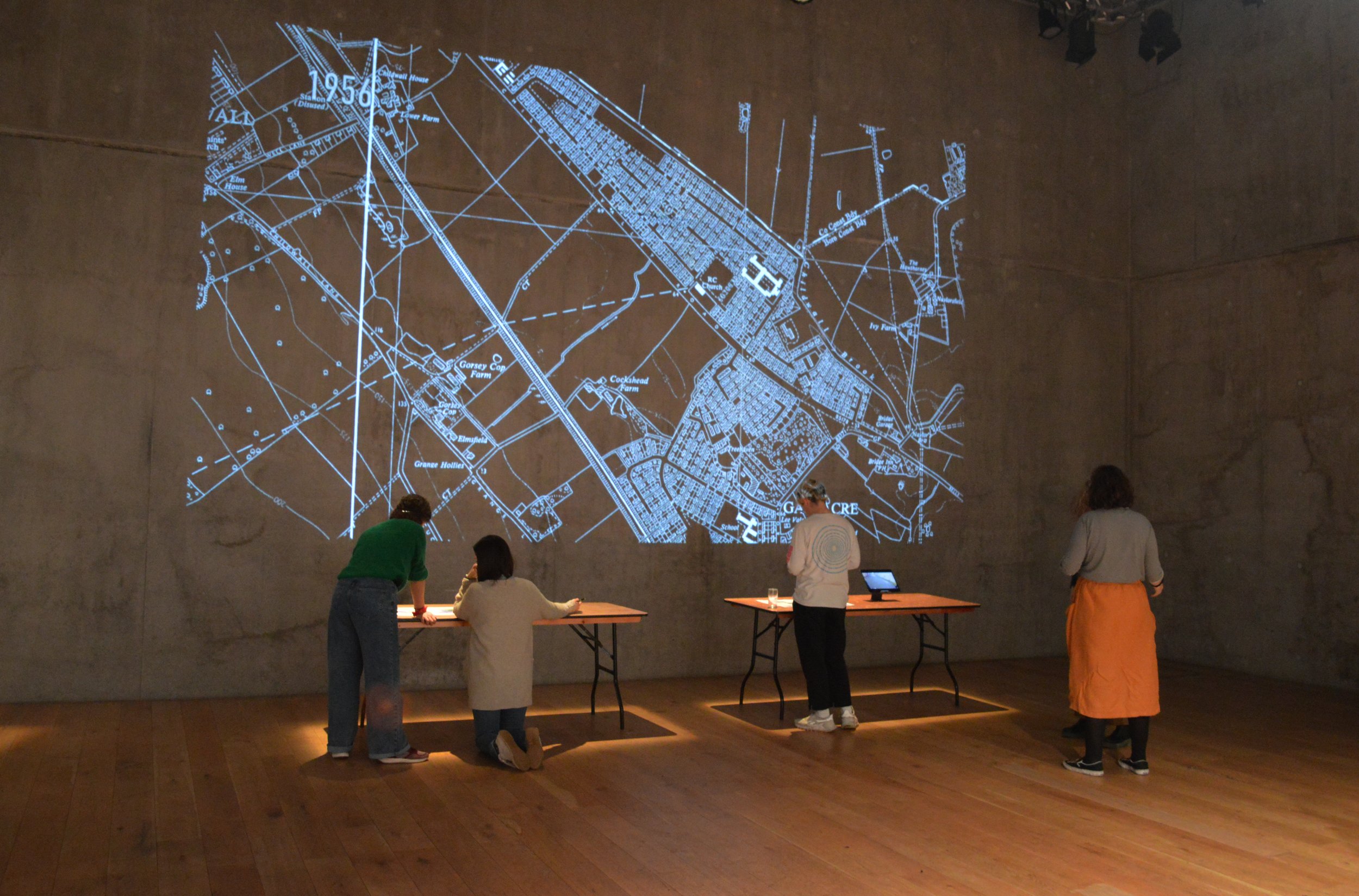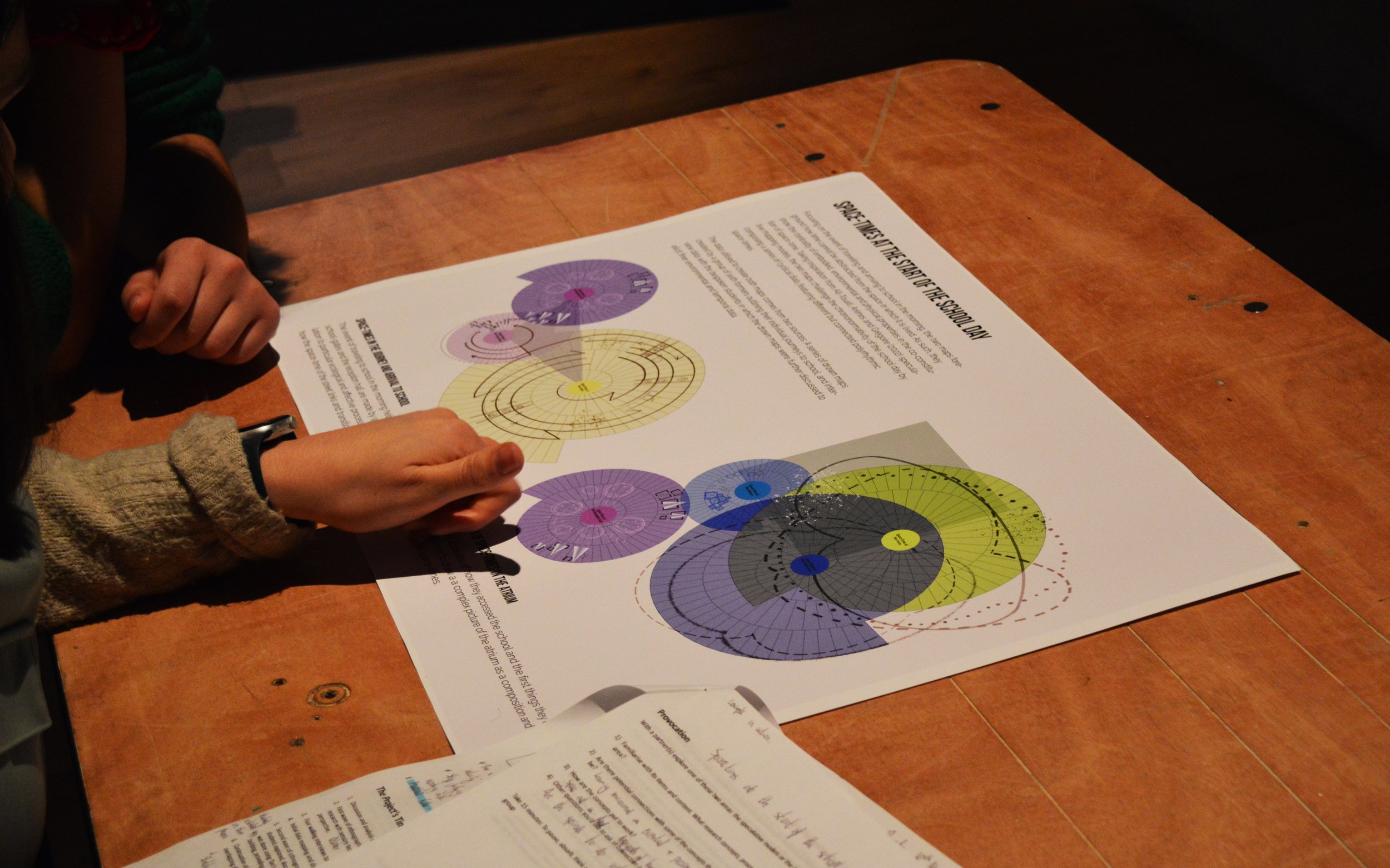The School Building exhibition
Laura Trafí-Prats, Project’s PI and Senior Lecturer at the Faculty of Health and Education, Manchester Metropolitan University
On November 9 we opened the exhibition The School Building: Speculative Models, Sensory Envelops and Socio-Semantic Maps at The Space, a multifunctional environment in the lower floor of the prestigious Nottingham Contemporary Gallery, in Nottingham. The exhibition featured documentations, artifacts, mappings and models from our ESRC funded project, ‘Mapping spatial practices and social distancing in smart schools’. We wrote a previous post discussing the event. Members of the public, and the academic community at Nottingham attended the opening.
We returned to The Space on the following morning to deliver a half-day doctoral seminar on eco-sensory methods to a group of fifteen post-graduate students. The seminar was organised in partnership with White Rose doctoral training and as part of the Education, Childhood and Youth Pathway. We utilised the exhibition artifacts and documents as a provocation for thought, and engagement with key research ideas concerning sensation, affect, space-time, lived experience, sensor mediated sensing, machinic vision, and speculative mapping.
By utilising the exhibition space as a pedagogical address, we immersed postgraduate students in processes of inquiry, methods and data-experiments that fully grappled with the potential of posthuman theories. Often, education research delivers weak connections between theory and methodology by presenting conceptual claims grounded in posthuman and non-representational frameworks that then are followed by research designs that continue centred on methods deploying anthropocentric understandings of agency, awareness, voice, and sense-making.
During the final part of the seminar, we facilitated experimentations with eco-sensory digital methods through the use of lidar scanners and AR filters in the space of the gallery. Participants engaged and reflected on the modalities of sensing enacted by the AR video filters and the lidar scanners. They noted how each modality incited different forms of movement, machinic modes of vision, relations of distance and proximity, speed and slowness, unexpected compositions of matter (digital-analogic-embodied). Clearly, the experiments foregrounded the affective force of the digital, operating remotely without direct contact, embodied touch or human vision. We discussed how in such experiences, affect could be better defined as the sensing of the ecological variation that results from digital, embodied, material entities entering in relation and rendering one another susceptible.
Lidar scan of the exhibition created by one of the participants










